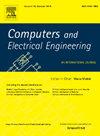Developing adaptive Yolov5-based Telugu handwritten character segmentation and classification framework using Enhanced Chef-Based Optimization Algorithm and Deep Learning Networks
IF 4.9
3区 计算机科学
Q1 COMPUTER SCIENCE, HARDWARE & ARCHITECTURE
引用次数: 0
Abstract
Handwritten character recognition through automated techniques is one of the recent innovations in the industry, as it helps in interpreting historical documents, digital scripts, and large records. Deep learning techniques are effective in recognizing complex image patterns like handwritten Telugu scripts, and however, inherent variability in writing styles, unique characteristics, limited data pose a challenging recognition environment. Defining a robust segmentation and classification tool with intelligent deep-learning techniques is one of the possible solutions for handling the variability and challenges within handwritten character recognition. So, this paper presented an effective Telugu handwritten character segmentation and classification model for handling the challenges in recognition of variable length sequences. Initially, the handwritten images are acquired from online data sources and are inputted into the Adaptive Yolov5 (A-YoloV5) model for the segmentation process. Here, the Enhanced Chef-Based Optimization Algorithm (ECOA) is developed for improving the performance of YoloV5 platform and reduces complexity in training. Then, the Adaptive Yolov5 (A-YoloV5) segments the telugu characters from the input handwritten images. After extracting ROI, the extracted images are sent into the newly developed Convolutional Neural Networks with Residual Attention-based Long Short-Term Memory layer (CNN-RA-LSTM) model for classification of the handwritten images. This network combines the CNN and LSTM networks with added residual layers to effectively extract the sequential features and then categorize the text. The efficacy of the CNN-RA-LSTM and A-Yolov5 model is compared with recent Telugu handwritten character recognition and has resulted in 95.41 % text recognition accuracy.
基于改进的chef优化算法和深度学习网络开发基于yolov5的自适应泰卢固手写体字符分割和分类框架
通过自动化技术进行手写字符识别是该行业最近的创新之一,因为它有助于解释历史文档、数字脚本和大型记录。深度学习技术在识别复杂的图像模式(如泰卢固语手写体)方面是有效的,然而,书写风格的内在可变性、独特的特征、有限的数据构成了一个具有挑战性的识别环境。使用智能深度学习技术定义一个健壮的分割和分类工具是处理手写字符识别中的可变性和挑战的可能解决方案之一。为此,本文提出了一种有效的泰卢固语手写体字符分割分类模型,以解决变长序列识别中的难题。首先,从在线数据源获取手写图像,并将其输入到Adaptive Yolov5 (A-YoloV5)模型中进行分割过程。为了提高YoloV5平台的性能,降低训练的复杂度,本文提出了基于厨师的增强型优化算法(Enhanced Chef-Based Optimization Algorithm, ECOA)。然后,自适应Yolov5 (A-YoloV5)从输入的手写图像中分割泰卢固语字符。提取ROI后,将提取的图像送入新开发的基于残差注意的长短期记忆层卷积神经网络(CNN-RA-LSTM)模型对手写图像进行分类。该网络将CNN和LSTM网络结合,增加残差层,有效提取序列特征,对文本进行分类。将CNN-RA-LSTM和A-Yolov5模型与最近的泰卢固语手写体字符识别效果进行了比较,结果显示文本识别准确率达到95.41%。
本文章由计算机程序翻译,如有差异,请以英文原文为准。
求助全文
约1分钟内获得全文
求助全文
来源期刊

Computers & Electrical Engineering
工程技术-工程:电子与电气
CiteScore
9.20
自引率
7.00%
发文量
661
审稿时长
47 days
期刊介绍:
The impact of computers has nowhere been more revolutionary than in electrical engineering. The design, analysis, and operation of electrical and electronic systems are now dominated by computers, a transformation that has been motivated by the natural ease of interface between computers and electrical systems, and the promise of spectacular improvements in speed and efficiency.
Published since 1973, Computers & Electrical Engineering provides rapid publication of topical research into the integration of computer technology and computational techniques with electrical and electronic systems. The journal publishes papers featuring novel implementations of computers and computational techniques in areas like signal and image processing, high-performance computing, parallel processing, and communications. Special attention will be paid to papers describing innovative architectures, algorithms, and software tools.
 求助内容:
求助内容: 应助结果提醒方式:
应助结果提醒方式:


